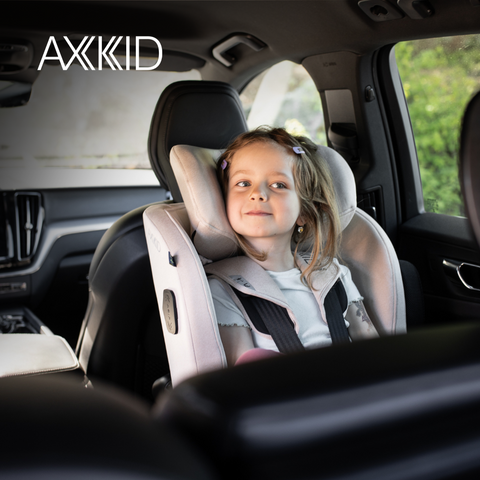Choosing the right car seat for a 4-year-old is crucial for ensuring their safety during travel. The type of car seat needed depends on the child’s weight and height, aligning with safety regulations and recommendations. This guide will help you understand the most suitable car seat for a 4-year-old.
Understanding Car Seat Regulations and Types
It’s essential to comply with safety standards such as the United Nations ECE Regulation 44.04 (R44) or the i-Size regulation (R129). Always look for the ‘E’ mark label on the seat to confirm it meets these standards. Car seats should be correctly fitted following the manufacturer's instructions.
Recommended Car Seats for a 4-Year-Old:
-
Rear-Facing Car Seats: Your child should stay in a rear-facing car seat until they reach the maximum height or weight specified by the car seat manufacturer. When your child outgrows the rear-facing seat, they can transition to a forward-facing car seat equipped with a harness and tether. Some rear-facing seats will grow with your child until 18kg, while some will span right up to 25kg.
-
Forward-Facing Car Seats: For children weighing between 9 kg and 18 kg (20 to 40 lbs), a forward-facing seat that complies with Group 1 under the R44 regulation is appropriate. This type of car seat can be used until around 4 years old.
-
Combination Seats: Some combination seats cater to Groups 0+, 1, and 2. These seats start as rearward-facing and can transition to forward-facing as the child grows, typically until they reach 18 kg. Some seats cover Groups 1, 2, and 3, supporting children from 9 kg to 36 kg (20 to 79 lbs), extending use up to approximately 11 years.
-
High-Backed Booster Seats: For a 4-year-old weighing between 15 kg and 25 kg (33 to 55 lbs), high-backed booster seats (Group 2) are recommended. These seats provide side impact protection and position the vehicle’s seat belt correctly over the child’s body. Group 2/3 seats cover 15 kg to 36 kg, serving children aged 4 to 11 years, which makes them a versatile choice however at In Car Safety Centre we would advocate keeping your child in an Extended Rear Facing Car Seat as long as possible.
Key Points to Consider:
-
Height and Weight: Ensure the seat aligns with your child’s current weight and height. For example, the i-Size regulation (R129) bases suitability on height rather than weight, often covering children from 100 cm (around 4 years) up to 135 cm.
-
Safety Harness: Seats that include a built-in harness are ideal until the child reaches 15 kg. After this, the seat belt secures both the child and the seat.
-
Backless Booster Seats: Changes in regulations since 2017 restrict the use of backless booster cushions for children under 125 cm or weighing less than 22 kg. If you choose a booster cushion, confirm it meets current safety standards. Although older models still comply with past regulations, it’s safer to opt for high-backed boosters.
Expert Recommendations:
The National Highway Traffic Safety Administration (NHTSA) advises that children aged 4 to 7 should remain in forward-facing car seats with a harness until they exceed the seat's height or weight limits. They can then transition to a booster seat but should stay in the back seat for maximum protection.
The UK government guidelines mandate using child car seats that match your child’s height or weight. Children under 135 cm or aged up to 12 years must use an appropriate child car seat.
Conclusion:
For most 4-year-olds, a forward-facing car seat with a five-point harness or a high-backed booster seat that complies with safety standards is ok but we would advocate an Extended Rear Facing Car Seat for as long as is possible preferably up to the age of 6.
Be sure to prioritise seats that adapt as your child grows, ensuring they remain safe and comfortable during travel. Always check the manufacturer’s recommendations and safety labels when purchasing a car seat to confirm its suitability for your child’s age, weight, and height or speak to one of our team.







Comments (0)
There are no comments for this article. Be the first one to leave a message!